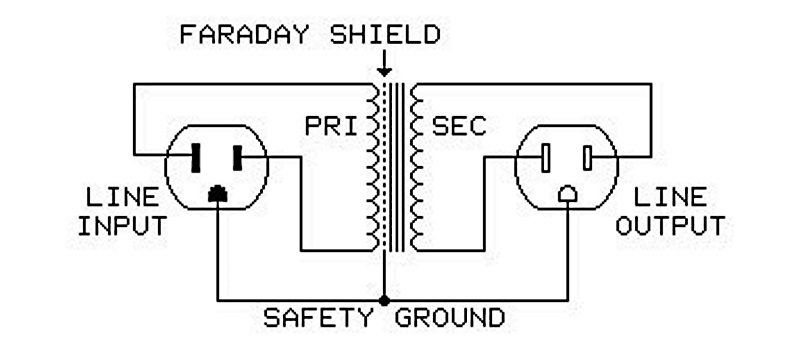
Normal & Common
First, let’s briefly define some terms used to describe power-line noise. “Noise” in this context is generally defined as any voltage at a frequency other than 60 Hz (in the U.S.). Harmonics of 60 Hz, generally 3rd, 5th, 7th, etc. are usually the largest components of noise (heard as “buzz” when they enter the audio path). Differential or “normal-mode” noise is that between line and neutral, while “common-mode” noise is that between neutral and safety-ground.
Generally, normal-mode is larger because it’s created not only by local loads on the branch circuit but can also be brought in through the main service panel from outside power lines. The combined normal-mode noise on each “phase” is conducted to all its branch circuits via the main service panel.
Common-mode noise can be created only by equipment on each branch circuit because neutral and safety ground for each branch circuit are bonded at the main service panel (this assumes there are no “shared neutrals”). See Figure 2, which shows a simplified schematic of a power-line filter. Such filters typically reduce normal-mode and common-mode noise only above about 50 kHz.

This is not very useful at reducing audio noise – audio cables themselves have significant rejection starting at high audio frequencies. Note that the normal “leakage” currents that flow in capacitors “Cy” couple noise from both line and neutral to safety ground.
Remember, safety ground is normally the reference “ground” for each piece of equipment. When additional noise currents flow into the safety ground wiring, more noise voltage is created between outlets. It’s these voltage drops that can couple into our audio at some vulnerable point!
When any line filter, conditioner, or isolation transformer is used, electrical code requires that both it and the equipment it feeds remain connected to safety ground, as shown for the isolation transformer (Figure 3). Because capacitances in both transformers and filters divert additional 60 Hz and high-frequency noise currents into the safety ground system, they frequently aggravate the problem they claim to solve.

Second, the touted noise attenuation figures for virtually all these power line devices are unrealistic. Laboratory measurement setups connect the device and test equipment to a large metal ground plane.
The resulting specifications can be impressive, but in my opinion they don’t represent performance in a real-world system where the ground connection is to safety ground wiring or conduit.
However, these devices can be very effective if installed at the power service entrance, where all system safety grounds are bonded to each other.
